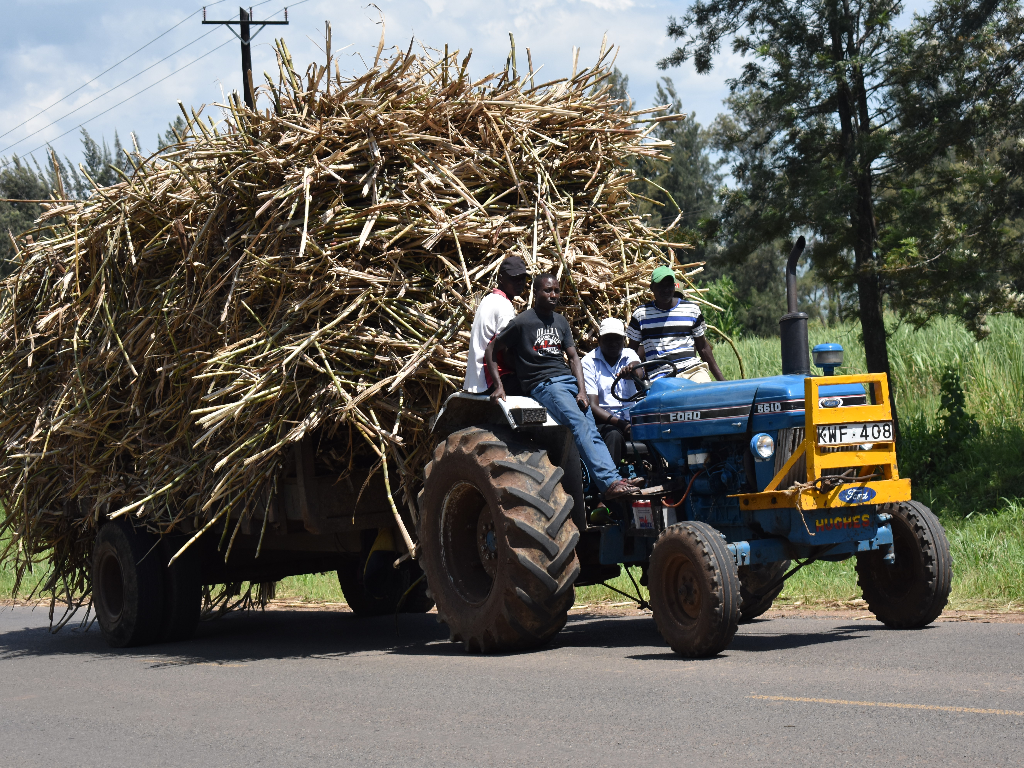The sugarcane industry in Kenya is a vital component of the agricultural sector, providing livelihoods to thousands of farmers and contributing significantly to the national economy. However, this industry faces a significant challenge that often goes unnoticed—post-harvest losses. These losses, if not addressed, could undermine the economic viability of sugarcane farming and the broader sugar industry. In this op-ed, I will highlight the major ways in which these losses occur and propose practical solutions to mitigate them.
Understanding the Causes of Post-Harvest Losses
-
Cane Spillage During Transportation
One of the most significant causes of post-harvest losses in the sugarcane industry is cane spillage during transportation. When sugarcane is harvested, it is loaded onto trucks for transport to the mill and weighbridges. Unfortunately, the transportation process is often marred by poor road conditions and inadequate loading practices. These factors contribute to significant cane spillage, resulting in loss of both raw material and potential revenue for farmers.
-
Theft by Pedestrians
Another common issue is the theft of sugarcane by pedestrians from stalled or stopped trucks. This problem is exacerbated by the long distances that some trucks have to travel to reach mills and the frequent delays caused by traffic or breakdowns. The temptation for pedestrians to help themselves to the sweet, juicy cane is often too great, leading to further losses for the farmers and transporters.
-
Abandoned Cane in the Field
Farmers sometimes leave harvested cane in the fields, especially when transporting trucks are full. The cost of transporting what is perceived as an insignificant quantity of cane often discourages farmers from making the extra effort to retrieve it. Unfortunately, this leads to wastage of valuable produce that could have contributed to overall yield and income.
-
Improper Harvesting Techniques
Improper harvesting techniques are a major cause of post-harvest losses. Many harvesters cut the cane well above the root point, leaving behind the portion of the cane with the highest sucrose content. This not only reduces the total weight of cane delivered to the mill but also affects the quality of the sugar produced, thereby impacting both farmers' earnings and the mill's profitability.
-
Delays Between Harvesting and Processing
The time taken from harvesting to delivery at the mill is a critical factor in post-harvest losses. Prolonged delays, whether in the fields or at weighbridge yards, lead to a reduction in the cane's weight due to moisture loss. This reduction negatively affects both farmers and millers, as payments are typically based on weight. Additionally, these delays can result in staleness, particularly in mature or burnt cane. The longer the cane sits without processing, the more it loses sucrose content due to microbial activity, which diminishes the quality of the cane and reduces the sugar yield per ton delivered.
Proposed Solutions to Mitigate Post-Harvest Losses
To address these challenges, a multi-faceted approach involving all stakeholders in the sugarcane industry is necessary. Here are some proposed solutions:
-
Improving Transportation Infrastructure and Practices
Enhancing the road infrastructure, especially in sugarcane-growing regions, would significantly reduce the amount of cane lost during transportation. Additionally, implementing better loading practices and using more secure transport vehicles can minimize spillage. The government, in collaboration with the private sector, should invest in building and maintaining roads that are crucial for agricultural transport.
-
Implementing Community Awareness Programs
To tackle the issue of cane theft by pedestrians, community awareness programs should be implemented to educate the public on the economic impact of such actions. By fostering a sense of collective responsibility and encouraging respect for farmers' produce, we can reduce the incidence of theft. Farmers and transporters can also explore employing simple security measures, such as covering cane loads with nets, to deter theft.
-
Encouraging Cooperative Efforts Among Farmers
Farmers should be encouraged to work cooperatively to minimize losses. By pooling resources, they can organize collective transport efforts, ensuring that no cane is left in the field. Additionally, cooperative buying or leasing of transport vehicles could reduce individual costs and ensure all harvested cane reaches the mills.
-
Training and Incentivizing Proper Harvesting Techniques
Proper training for harvesters on the correct techniques for cutting cane can greatly reduce losses due to improper harvesting. Harvesters should be educated on the importance of cutting the cane as close to the root as possible to maximize sucrose yield. Incentives such as bonuses or higher pay rates for properly harvested cane could motivate workers to adopt these techniques.
-
Streamlining Harvesting and Delivery Processes
Proper planning and coordination between farmers, transporters, and mills are essential to reduce the time between harvesting and processing. Establishing efficient schedules and ensuring prompt transportation can help minimize the time cane spends in the field or at weighbridge yards, thereby reducing weight loss and maintaining cane quality.
-
Enhancing Response to Emergencies
Quick and efficient responses to emergencies, such as fire outbreaks in sugarcane fields, are crucial in minimizing losses. Farmers should be encouraged to immediately report any incidents, and processes for handling such emergencies should be simplified to ensure swift action. This could include reducing bureaucratic steps and establishing a direct line of communication between farmers, local authorities, and mill operators.
-
Utilizing Technology for Monitoring and Management
Leveraging technology can also play a crucial role in reducing post-harvest losses. GPS tracking of trucks can help monitor transportation routes and identify problem areas where spillage or theft frequently occurs. Digital record-keeping can ensure that no cane is left unaccounted for in the fields, and real-time communication tools can coordinate better harvesting and transport schedules.
The post-harvest losses experienced in Kenya's sugarcane industry are not insurmountable. By acknowledging these challenges and implementing practical solutions, we can reduce wastage, increase profitability, and enhance the sustainability of the sugarcane sector. It is incumbent upon all stakeholders—farmers, transporters, millers, and the government—to work together in addressing these issues. Only through collective effort and innovative thinking can we secure a prosperous future for Kenya's sugarcane industry.
Credit: James K'Adwar of AFA - Sugar Directorate

